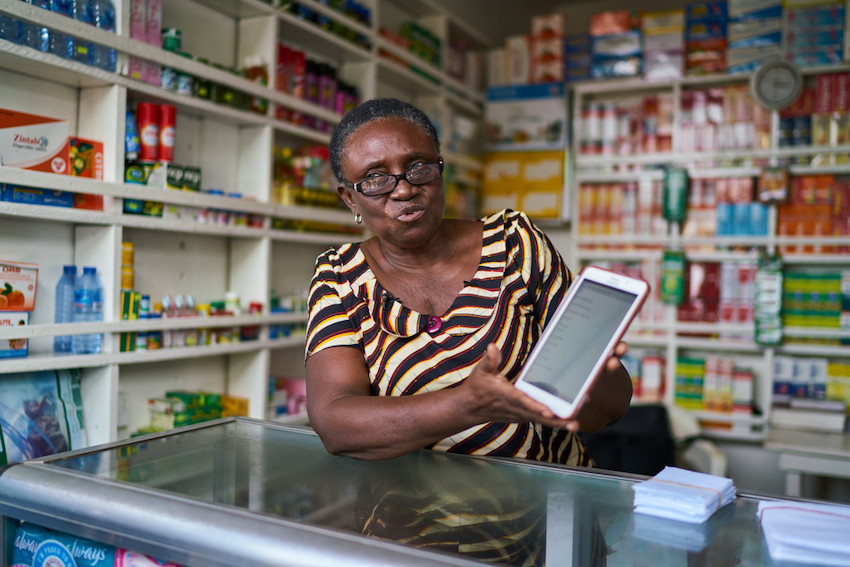
Photo Credit: Nana Kofi Acquah/FHI 360
Big breakthroughs in HIV science, such as antiretroviral therapy and the “universal test and treat” policy, create hope and galvanize efforts to bring the epidemic to an end. Yet, no matter how promising the strategy, we know from experience that it is not easy to incorporate the latest approaches into poorly resourced, over-stretched health systems. Nor is it reasonable to expect that health systems can absorb the increased volume of patients that seems to go hand in hand with innovations.
The differentiated models of care approach is the latest groundbreaking way to manage HIV, and as such, the one that now demands a thoughtful approach for successfully bringing it to scale. Differentiated care entails providing a range of patient-centered alternatives to meet their specific and varied needs. Its goal is to ensure that patients receive what they need in a way that they prefer while simultaneously maximizing the efficiency of the health system. For example, a patient with undiagnosed symptoms will need to see a health care provider at a clinic, while healthier people may only need to refill prescriptions at a drug pick-up point in the community. Differentiated care provides individualized care to each of these types of patients while reducing the burden on health care systems. So far, pilots for this approach have shown a lot of promise. How can we achieve the impact we know is possible at scale?
Learn from the past
We have overcome limitations in the capacity of our health systems to introduce innovations in HIV prevention and treatment in the past — and we can do it again. Advances in diagnostic technologies have helped us leap from taking days or weeks to get blood test results in the 1980s, to 20 minutes in the 1990s, to immediate self-testing in the privacy of one’s home today. We have successfully blended the uptake of new technologies with the capacity to absorb millions of additional clients, going from testing just a few people annually in the mid-1980s to over 70 million per year today. We have moved quickly from single and dual therapy treatments with difficult side effects to multiple therapy regimens with improved side effects, to the current once-a-day regimen with even more improved side effects. Only 1.3 million people were on antiretroviral therapy in 2005; that number climbed to almost 21 million by July 2017.
Learn from the present
An important component of differentiated care is transitioning elements of patient management from clinical facilities to communities and households. In pilot programs, community antiretroviral therapy groups and adherence clubs reduce interactions with the health system through strategies such as patients rotating responsibility for picking up prescriptions. Estimates show that large antiretroviral therapy programs, such as the one in South Africa, need to shift more than 1.5 million patients from health facilities to community models, 671,594 of whom would be cared for in adherence clubs. This would mean setting up, contracting with and monitoring 33,000 adherence clubs — a truly overwhelming task.
When thinking about how to scale up, the HIV community can learn invaluable lessons from other public health approaches that have shifted services to the community level. Three approaches — community health extension worker programs, community directly observed therapy for tuberculosis and community-based family planning — could be modeled to make services available outside of clinics, manage HIV as a chronic condition and support self-management of HIV. These approaches have all been scaled in low-resource settings with success. There is no need to come up with entirely new strategies when we can borrow from these.
Set up future success
The universal test and treat policy, if perfectly implemented today, would bring the 36.7 million people living with HIV into treatment programs. There would then be an overload in existing antiretroviral therapy programs. Differentiated care has the potential to assist health systems in keeping pace with this demand, but only if we are bold and keep in mind four critical requirements:
- Build on the host country’s existing investments in community health system infrastructure
- Ensure dedicated resources by cultivating strong central government leadership and ownership
- Develop a trained, salaried workforce, as reliance on volunteers is not sustainable
- Establish a decentralized system, with the budgets for monitoring and evaluation, commodities and supply chains maintained at the district and subdistrict levels
If we begin with the end in mind — by learning from the past and the present and preparing early to counteract likely roadblocks — we will have a far greater chance of bringing differentiated care to scale.
World AIDS Day is an opportunity to pause and make bigger plans to finally put an end to an epidemic that has lasted much too long. It is exciting to think of the difference it would make if the world took action today to realize all the benefits the differentiated care approach offers.
